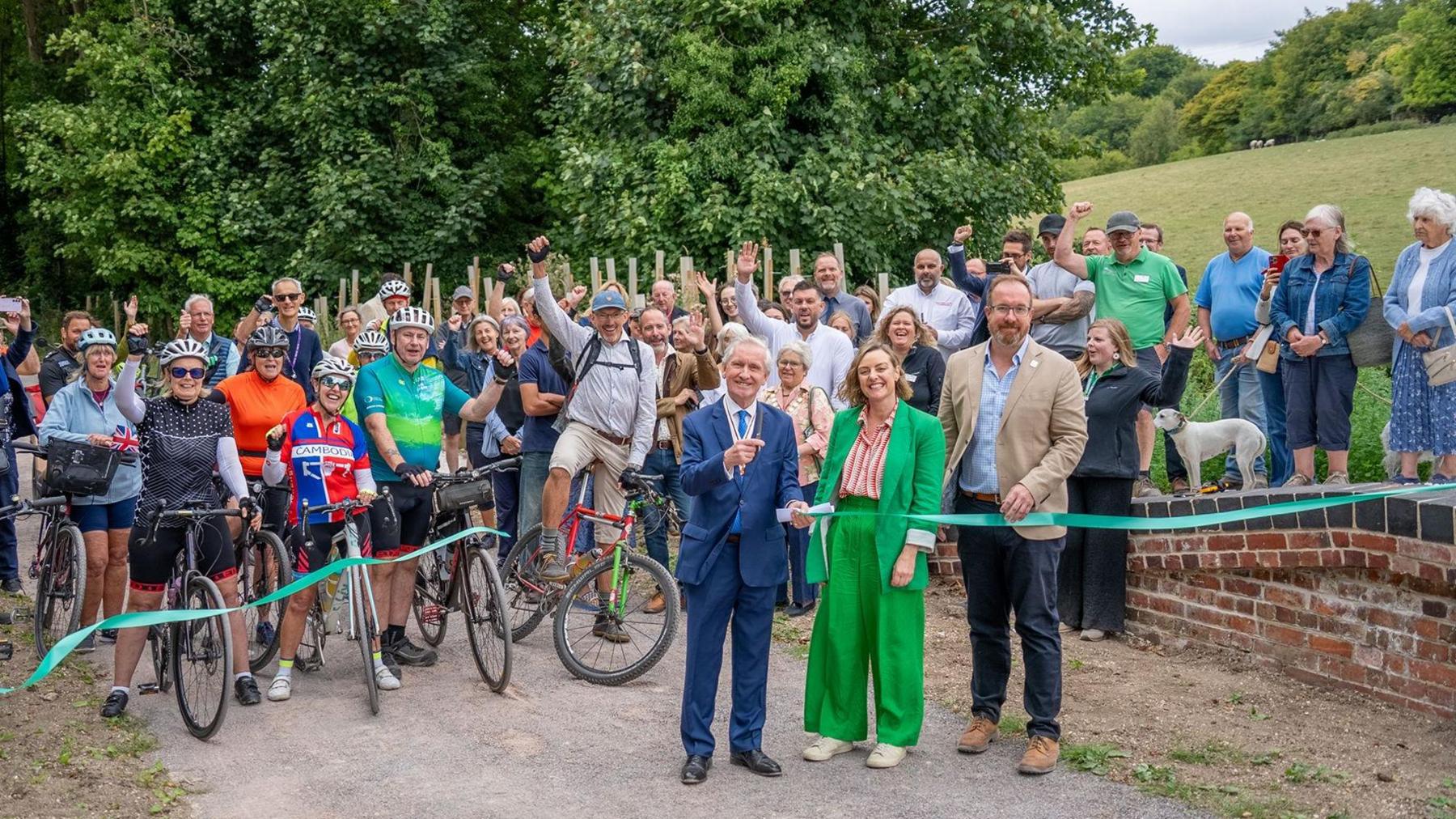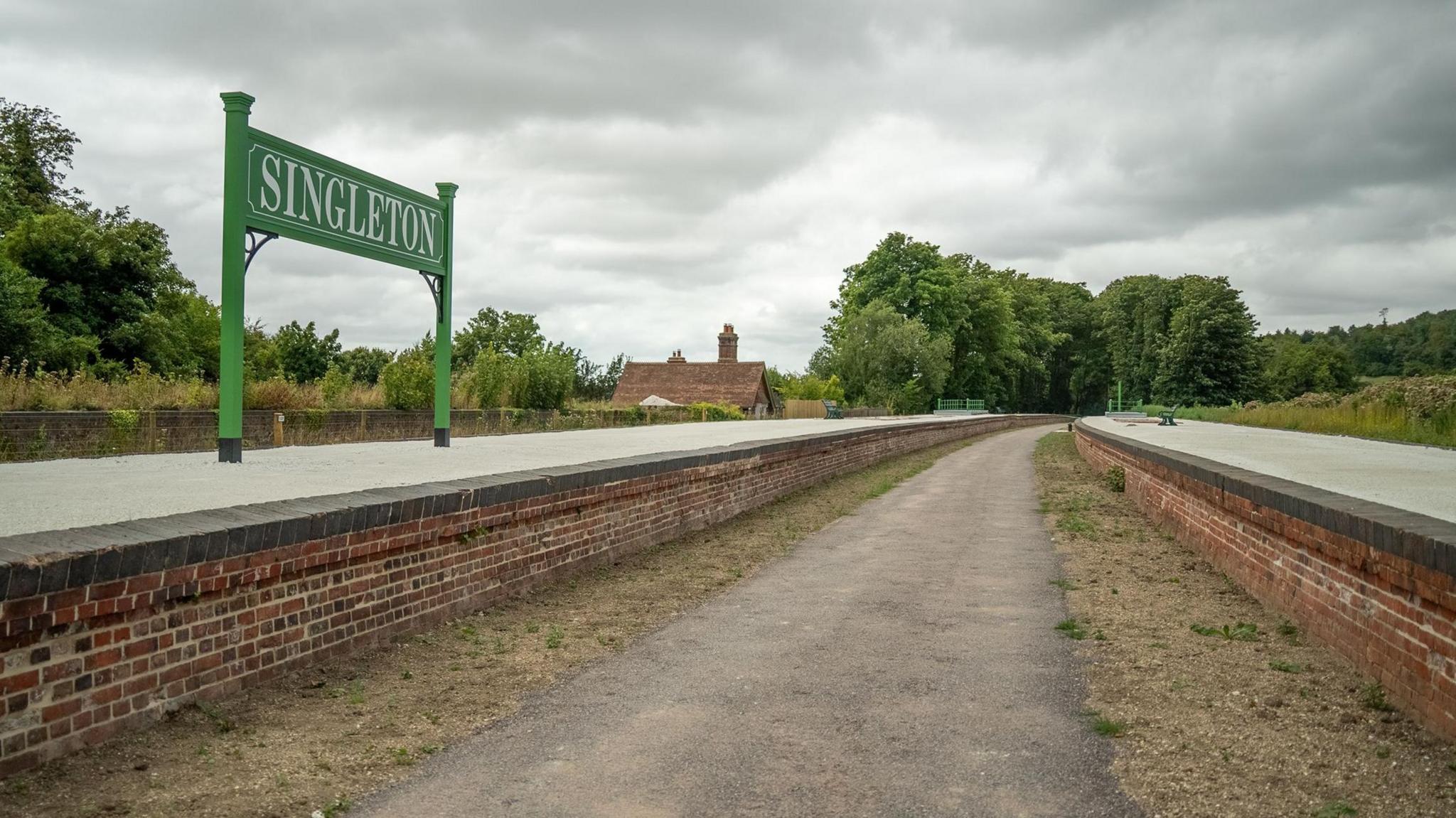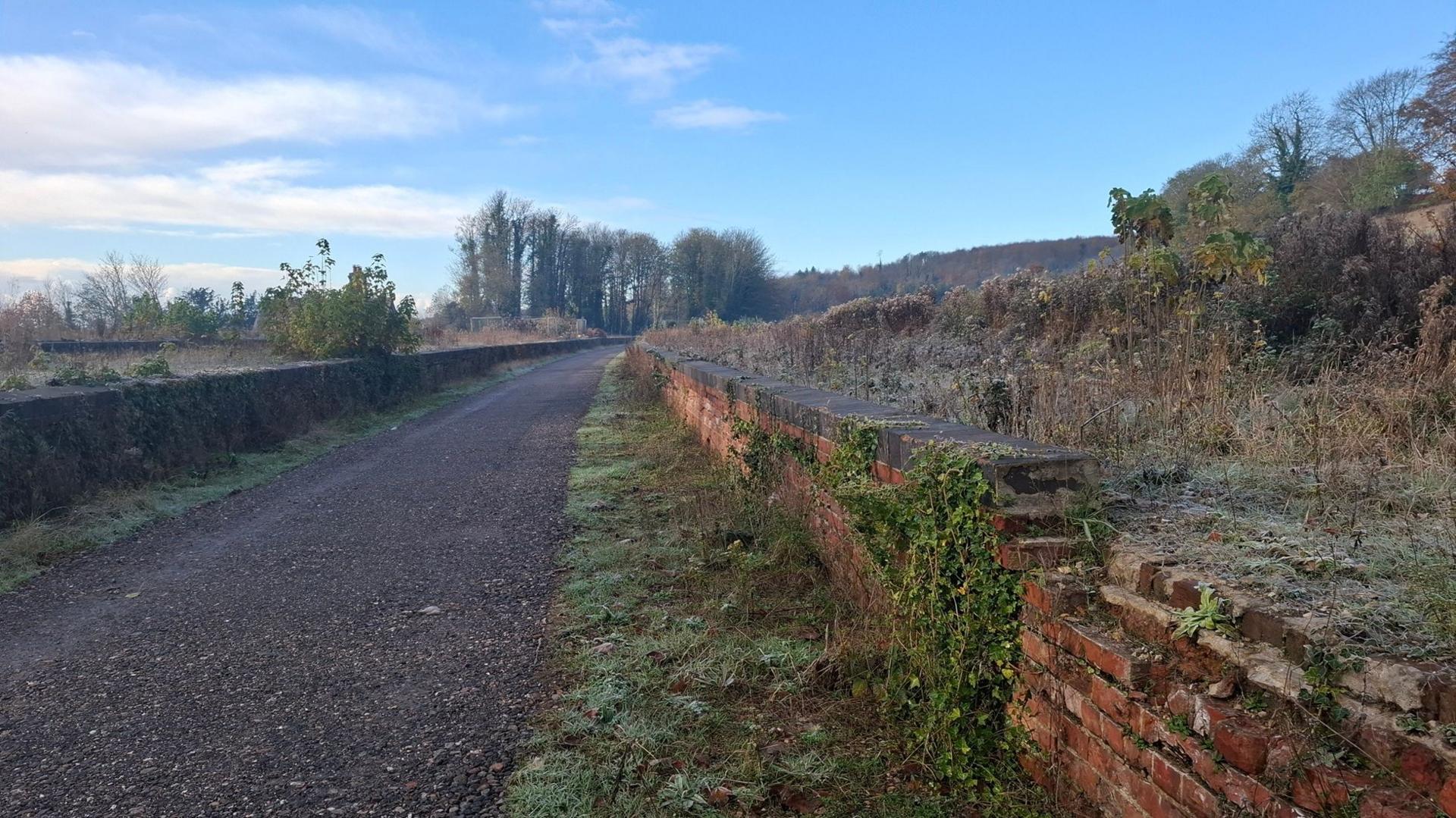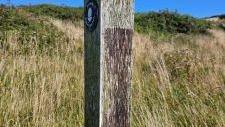New cycling and walking trail opens on South Downs

The Deputy Lieutenant of West Sussex, Simon Knight, with Vanessa Rowlands, chairperson of South Downs National Park Authority, and other project partners declaring the new section of Centurion Way open to the public
- Published
A former Victorian railway station in the South Downs National Park has been turned into a new cycling and walking trail.
The new trail, which is an extension of the Centurion Way, follows the old Singleton Station line which ran through the park before it closed in the 1990s.
South Downs National Park Authority (SDNPA) said the project included nearly 2km (1.24 miles) of trail, two entry and exit points and about 1.5km (0.93 miles) of widened pathway alongside the A286.
Vanessa Rowlands, chairwoman of the SDNPA, said: "It's exciting to unveil this new section of the Centurion Way, giving people better access into the heart of the national park with some amazing views along the way."

The Singleton Station site has been renovated to pay homage to its history
She added the renovations, which took three years to complete, pay homage to the "incredible history of the site".
"The new section of Centurion Way links up with train and bus connections to promote sustainable travelling," she added.
Centurion Way now reaches northwards from West Dean, passing Singleton and ending near Cucumber Farm.
The SNDPA added further refurbishments would take place over the next two to three years to extend the route to Cocking Hill, linking with the South Downs Way.

Singleton Station before works were carried out by SDNPA, The West Dean Estate, National Trust, Cowdray Estate, parish councils, the Friends of Centurion Way and Chichester Cycle Forum
Singleton was once a key station on the London, Brighton and South Coast Railway (LB&SCR) line from Chichester to Midhurst.
In its heyday, passengers disembarked at the station for the Goodwood Races.
The station had hosted the Prince of Wales, who became Edward VII, on his trips to the West Dean Estate.
However, due to increased transport competition, including a local bus route which started in the 1920s, this led to the suspension of passenger services by 1935.
After this, the line was used solely for moving gravel and sugar beet until the early 1990s when the tracks were finally removed, according to the SDNPA.
Follow BBC Sussex on Facebook, external, on X, external, and on Instagram, external. Send your story ideas to southeasttoday@bbc.co.uk, external or WhatsApp us on 08081 002250.
Related topics
- Published9 June

- Published22 September 2024
